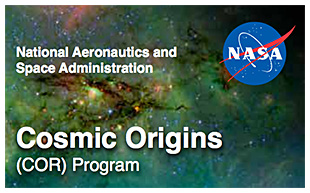COPAG Seeks Input on Future Large Space Astrophysics Missions
Susan Neff NASA's GSFC
Which large astrophysics missions should NASA study prior to the 2020 decadal survey? The Cosmic Origins Program Analysis Group (COPAG) would like to hear your ideas and recommendations by 24 April 2015.
NASA is seeking input from the science community that will culminate in a decision to study a few large missions (> $1B) prior to the 2020 Decadal Survey. The COPAG requests your help in providing this input to NASA. All interested members of the community are encouraged to participate in planning our future.
The purpose of the detailed studies (science, technology, cost) is to give the best possible information to the 2020 decadal committee as they set priorities for the next decade. A white paper released by NASA's Astrophysics Division lists four candidate missions, including “Far-IR Surveyor,” "Habitable Exoplanet Mission," "UV/Optical/IR Surveyor," and "X-ray Surveyor” to be commented upon by the community. These missions are all listed in the Astrophysics Roadmap, “Enduring Quests, Daring Visions,” and the four missions were all mentioned in some form in the 2010 decadal survey recommendations.
Community input will be provided to NASA’s Astrophysics Subcommittee through its three Program Analysis Groups (PAGs): COPAG, PhysPAG, and ExoPAG. Each PAG has been asked to comment on the inclusion (or not) of all four missions in the to-be-studied list, and to address additional large missions that are plausible candidates to begin development in the early 2020s. This exercise addresses only large missions; community input on smaller missions ("probes," $300M < probe < $1B) may be requested by NASA at a later time.
The COPAG Executive Committee (EC) is seeking input through several paths, including short white papers (due 24 April 2015), science interest group meetings, and virtual Town Hall meetings.
More information on ways to participate may be found on the COPAG webpage.


